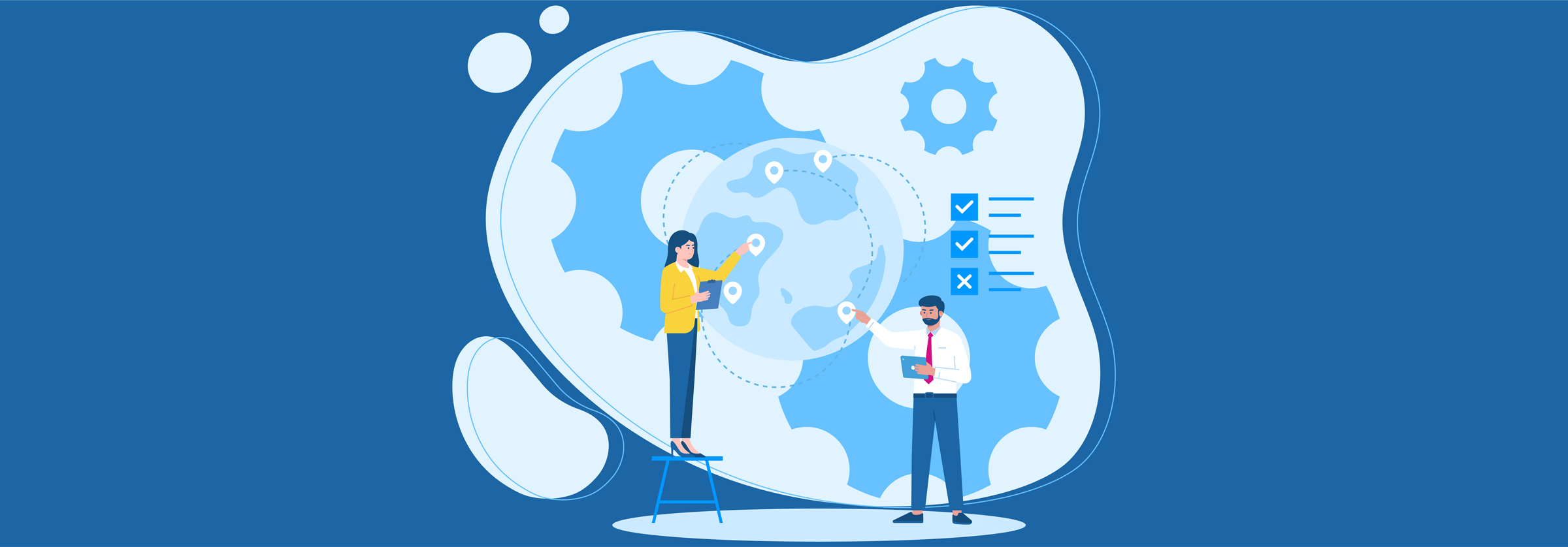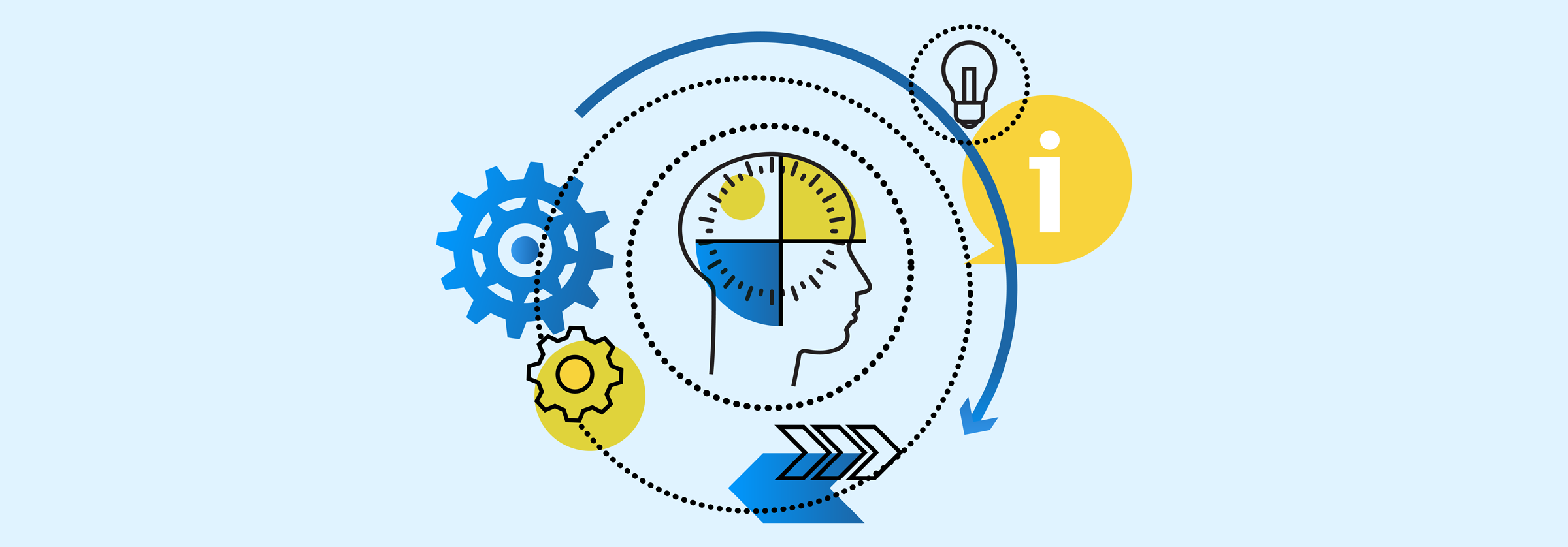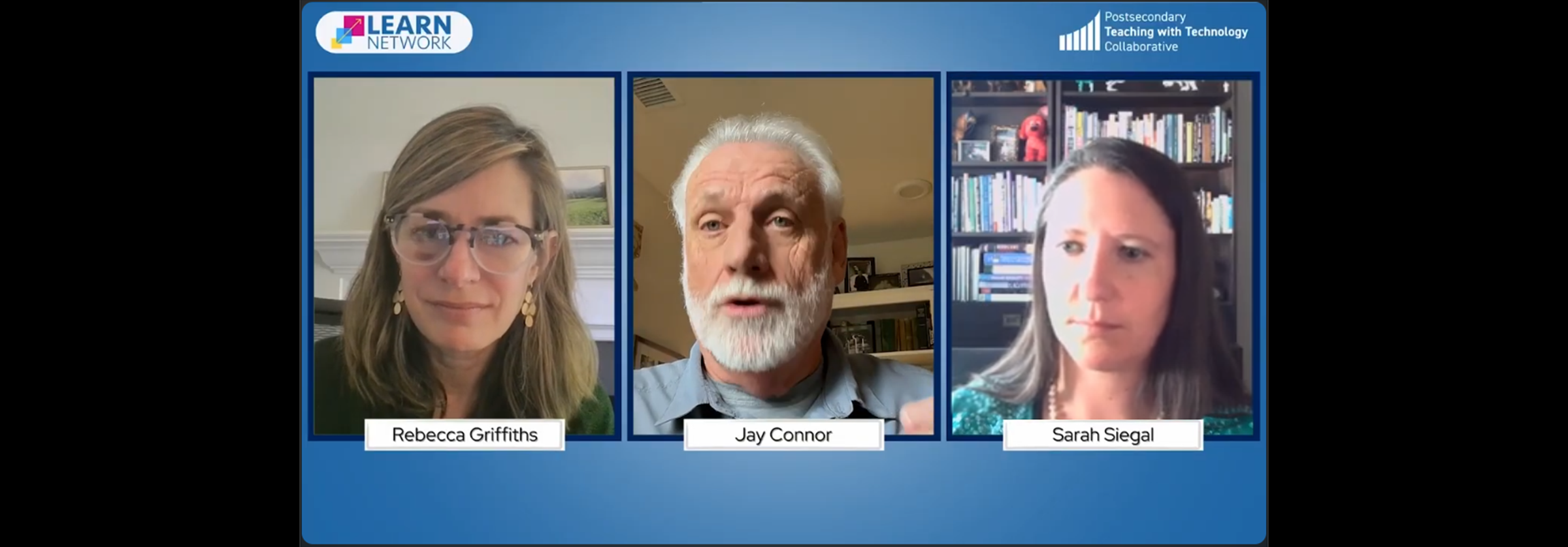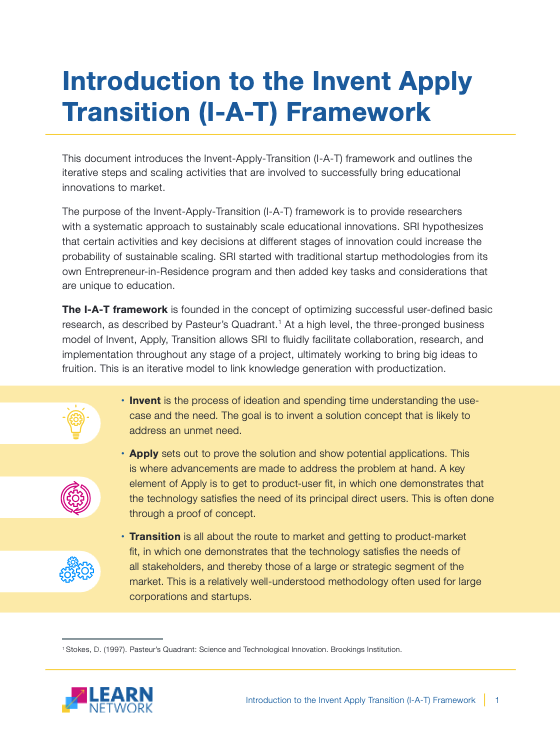LEARN Network lead Rebecca Griffiths recently had a conversation with the SRI Homeroom podcast host Kori Hamilton Biagas. They discussed how promising innovations with strong theories of action have inspired Griffiths’ work and how the LEARN Network is helping researchers better match their promising theories with real world problems of practice.
Jay Connor, CEO of Learning Ovations, and Sarah Siegal, director of research and practice at Scholastic and former vice president of research at Learning Ovations, recently sat down for a conversation with Rebecca Griffiths, principal researcher at SRI Education and principal investigator for the LEARN Network, to discuss their journey in scaling A2i.
In this video from the Learn Network’s Stories of Scaling series, Jay Connor, CEO of Learning Ovations, and Sarah Siegal, director of research and practice at Scholastic and former vice president of research at Learning Ovations, sit down for a conversation with Rebecca Griffiths, principal researcher at SRI Education and principal investigator for the LEARN Network.
Wondering where to start with the I-A-T framework? Use this introductory breakdown to learn more about the framework and the activities associated with scaling an educational product. This document outlines the iterative steps and scaling activities that are involved to successfully bring educational innovations to market.
When researchers seek to create a product, program, or intervention to enhance educational outcomes for students, they often start from a theoretical foundation. A theory of change, or a conceptual model based in research of how a specific product can lead to a desired change, is often the launchpad for creation.







